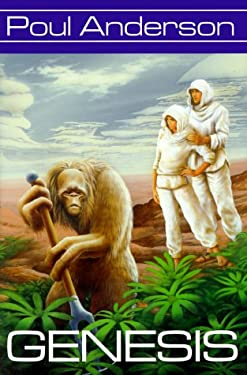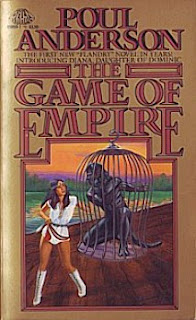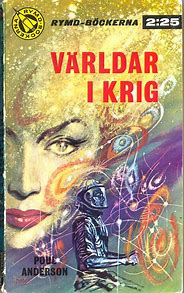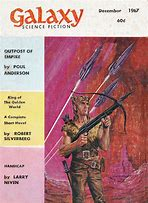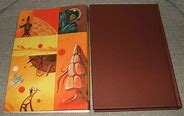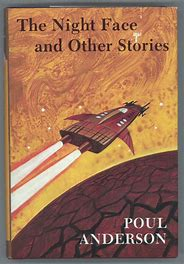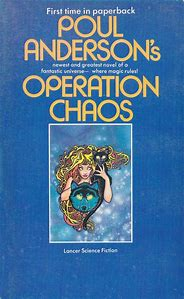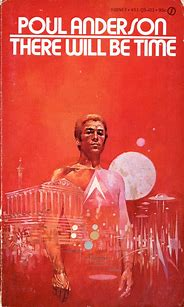(III) Narratives about what it is like for a time traveller to be in the past.
Jack Finney does this very well in parts of his novel, Time And Again.
"The Sorrow of Odin the Goth" and "Star of the Sea" are two long instalments of Poul Anderson's Time Patrol series. These two instalments, both about Northern European mythology, could be collected as The Gods of Time. Another two instalments, "The Year of the Ransom" and "Ivory, and Apes, and Peacocks," both about Neldorian time criminals, could be collected as The Thieves of Time. Gods and Thieves could then become Volumes II and III of a four-volume boxed set. However, this takes us away from our current focus on some of the contents of the two Gods instalments.
In both instalments, some entire narrative sections are entirely about the lives of people living in the past.
"Wind gusted out of twilight as the door opened."
-Poul Anderson, "The Sorrow of Odin the Goth" IN Anderson, Time Patrol (Riverdale, NY, December 2010), pp. 333-465 AT 372, p. 333.
"Winter descended..."
-ibid., 300-302, p. 362.
"Seen from the ramparts of Old Camp, nature was terrifying enough."
-Poul Anderson, "Star of the Sea" IN Time Patrol, pp. 467-640 AT 1, p. 469.
"Winter brought rain..."
-ibid., 3, p. 494.
"Wind rushed bitter..."
-ibid., 5, p. 518.
"Suddenly spring billowed over the land."
-ibid., 7, p. 530.
In "The Sorrow...," the fifth century Goths do not know that their mysterious visitor, the Wanderer, is a time traveller. The events in these sections unfold as they would have done if he had been their contemporary or, as they believe, Wodan.
In the opening story, "Time Patrol," in a passage that I have quoted more than once before, we read:
"This was the first moment that the reality of time travel struck home to Everard."
-Poul Anderson, "Time Patrol" IN Time Patrol, pp. 1-53 AT 4, p. 24.
He is in a hansom cab in Victorian London. A long paragraph spells out the implications.
Novels could be written about:
a time traveller who gets a job in the bar of the Cavern Club shortly before the Beatles begin their career there;
a Time Patrol Specialist who lives for a decade in the town where he grew up and sees his four year old self accompanying his parents to church on Sunday;
many other such scenarios.
These time travellers do not need to participate in major events or in causal paradoxes. It would be sufficient if they experienced and learned from the past. They would compile detailed histories of previously unknown events. Their author would be able to imagine what had really happened in history.

















